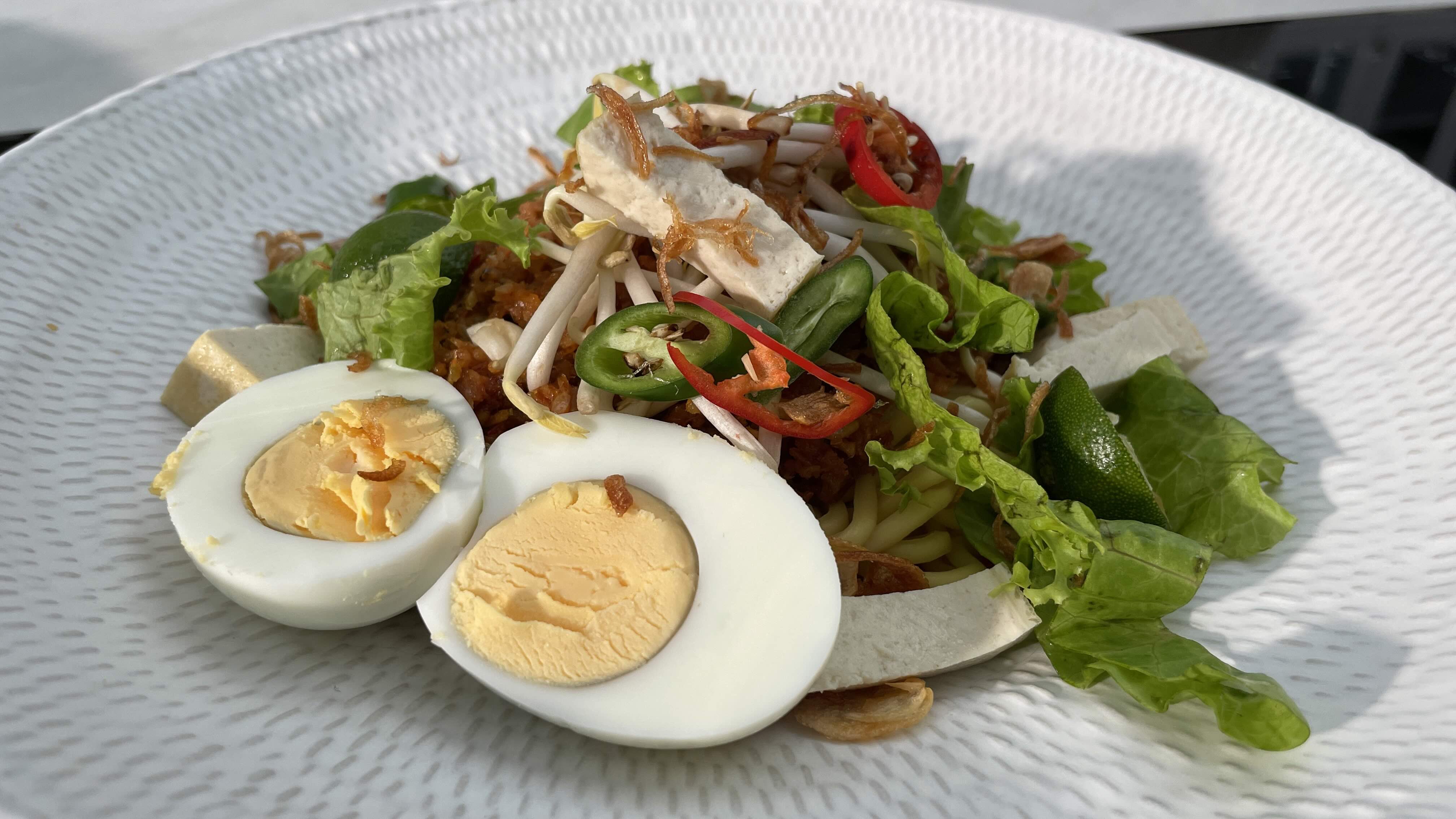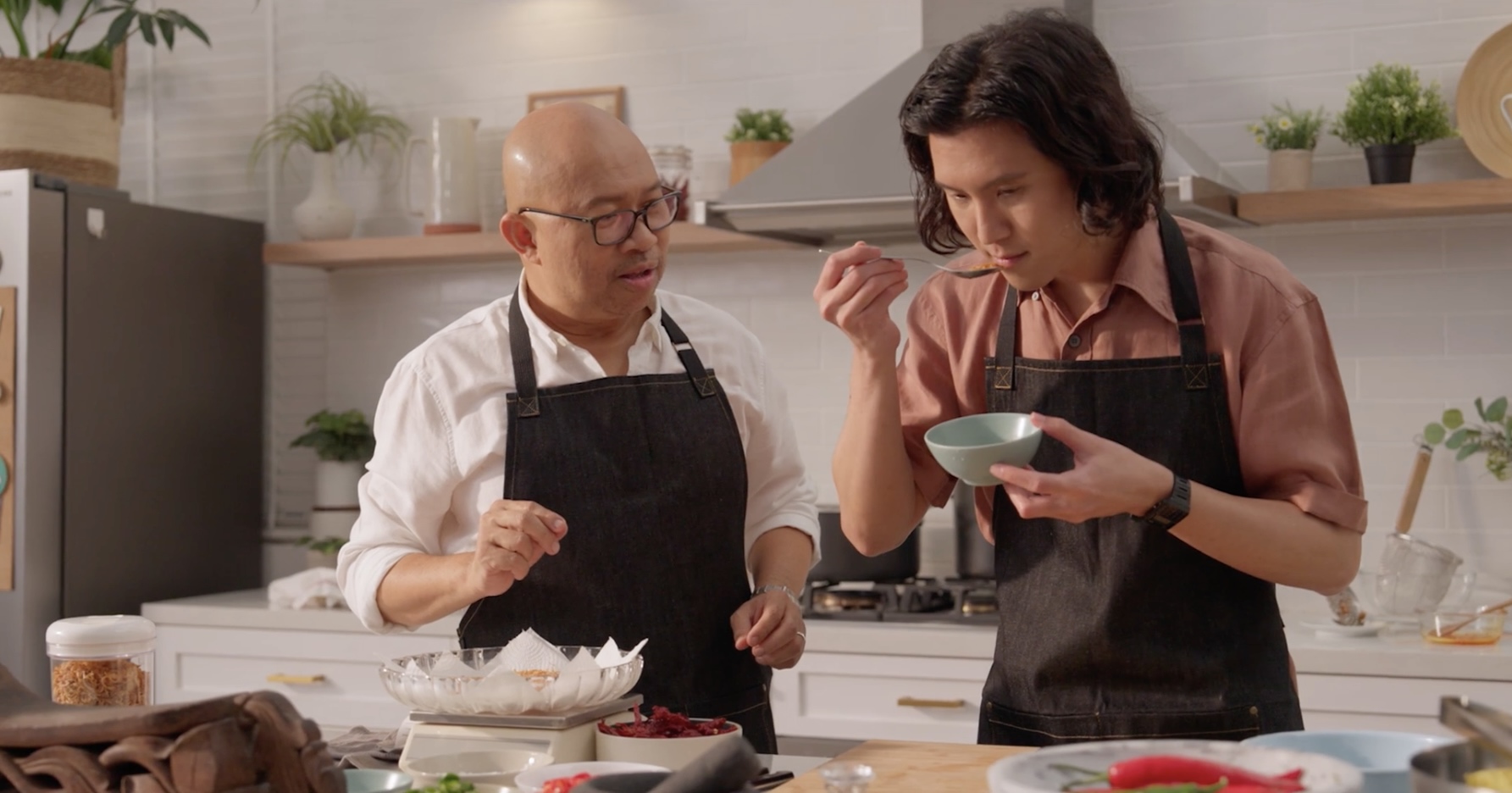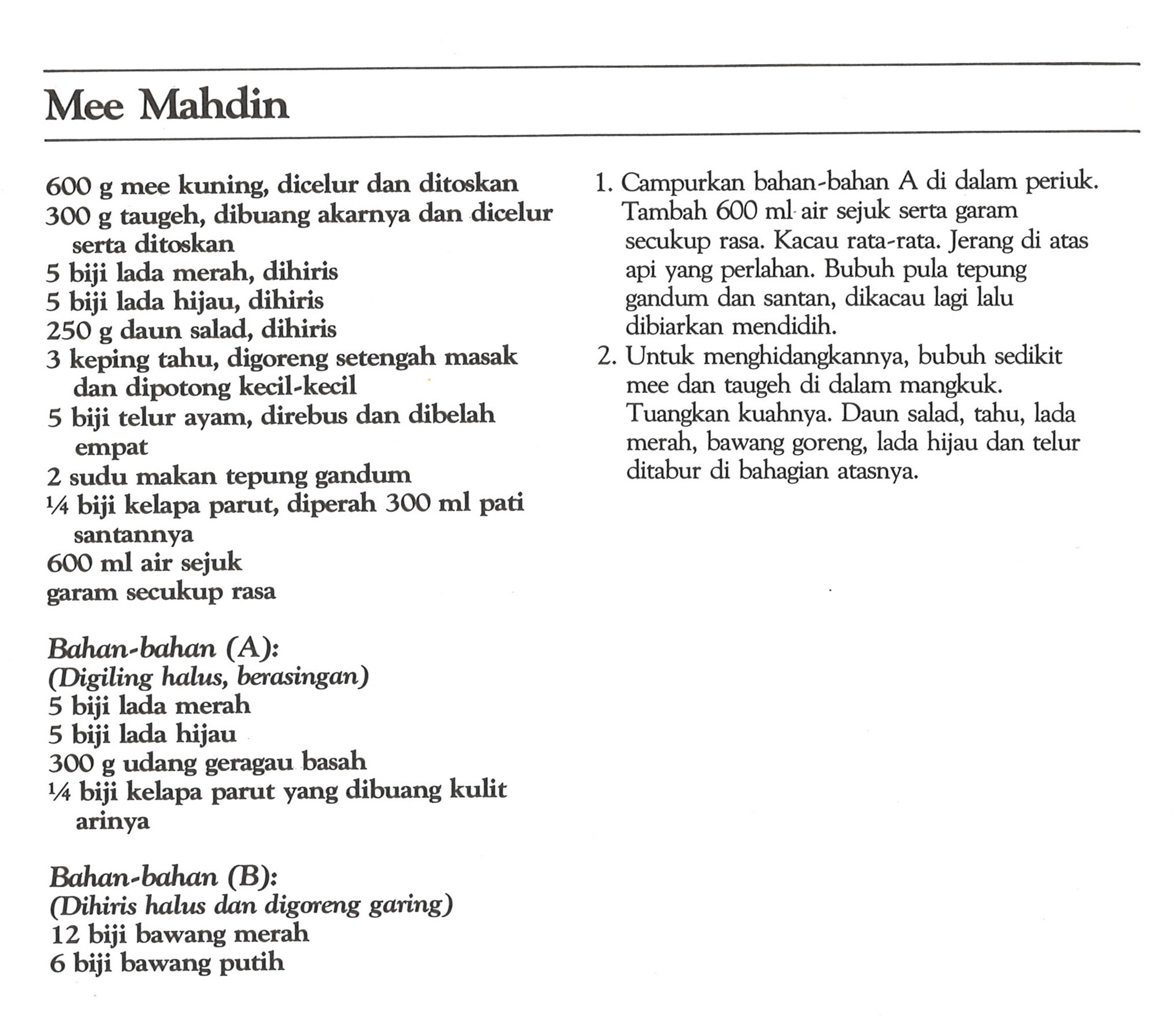Rediscovering Mee Maidin
We are familiar with local Malay favourites such as mee rebus and mee siam. But mention mee maidin and you might get puzzled looks. Join author Khir Johari as he recreates this rare dish from Kampong Gelam and takes a deep dive into its history and its star ingredient – krill.
Episode summary
Khir Johari, food historian and award-winning author of The Food of Singapore Malays (2021), makes mee maidin – a noodle dish based on a krill ragù – and tells us more about its origins. Why does a 1986 cookbook call it “mee mahdin”? And how was krill, once abundant in Singapore’s waters, caught using traditional fishing methods?


Recipes
Khir learnt how to make mee maidin from Nordin (whom he called Wak Din), a man who used to sell the dish commercially at 34 Bussorah Street, formerly known as Kampong Kaji, in Kampong Gelam.
According Khir’s research, Nordin inherited the recipe from Hussein, a migrant from South India who created the dish when he settled in Kampong Gelam. Hajah Asfiah Haji Abdullah, who wrote the 1986 cookbook, Hidangan Warisan Kita (Our Heritage Dishes), featured the recipe in her book and named the dish “Mee Mahdin” – likely in honour of Nordin and his wife, Salmah.

Hajah Asfiah’s ingredients and instructions
600 g yellow noodles, dipped and tossed
300 g bean sprouts, roots removed, dipped and tossed
5 red peppers, sliced
5 green peppers, sliced
250 g lettuce leaves, sliced
3 pieces of tofu, half-fried and cut into small pieces
5 chicken eggs, boiled and quartered
2 tablespoons wheat flour
1/4 grated coconut, squeeze 300 ml of coconut milk
600 ml cold water
salt to taste
Ingredients (A):
(finely ground, separate)
5 red pepper seeds
5 green peppercorns
300 g wet geragau prawns
¼ grated coconut with the skin removed
Ingredients (B):
(finely sliced and deep fried)
12 red onions
6 garlic cloves
-
Mix ingredients A in a saucepan. Add 600 ml of cold water and salt to taste. Stir evenly. Heat over slow fire. Then add wheat flour and coconut milk, stir again and let it boil.
-
To serve, put some mee and bean sprouts in a bowl. Pour in the sauce. Place the salad leaves, tofu, red pepper, fried onions, green pepper and eggs on top.
Khir’s recipe
30 shallot cloves
3-4 tbsp. salt (for brining)
3 cups cooking oil
2 kg krill
1 cup water (for boiling the krill)
20 stalks dried chilli
12 garlic cloves (approx. 95 g)
400 g coconut cream sans emulsifier
2 tbsp. flat sugar
1 tbsp. salt or to taste
1 tbsp. flat cornstarch
1 kg yellow noodles
For the garnish:
1 head lettuce, sliced
200 g bean sprouts
fried firm tofu
green and red chillies, deseeded and sliced
hard boiled eggs
calamansi
soy sauce
-
Slice the shallots into thin, uniform slices. Brine for 10–15 minutes to draw out excess moisture, then remove, rinse well and pat dry.
-
Heat the cooking oil over low to medium heat, then fry the sliced shallots until lightly golden. Remove from oil and pat with a paper towel to remove excess oil. The shallots will continue to brown slightly due to carryover cooking. 1/3 of the fried shallots will be used as garnish and the rest will be for the ragù. Keep the shallot oil for the ragù.
-
Using a colander, wash and clean the krill.
-
Bring 1 cup of water to a boil in a medium size pot. Add in the krill.
-
Coarse grind the cooked krill (with ½ cup water if stuck).
-
To prepare the chilli paste, first cut the dried chillies and remove the seeds. Then boil the chillies to soften them. Blend the softened chillies into a paste. Add the garlic to create the rempah (add a little water if it’s too chunky).
-
Sauté the rempah in the shallot oil until the rempah is slightly darker and the oil separates, about 12 minutes.
-
Add in the ground krill.
-
Stir in the coconut cream.
-
Give the ragù a touch of sweetness with sugar. Test for saltiness.
-
Add a little water to the corn starch to create a paste, then blend it in with the ragù.
-
Add the crushed fried shallots.
-
Assemble and serve with yellow noodles and garnishes.
Related Podcast
Kampong Gelam: Kitchen of the Malay World
You hear Malay, Javanese, Tamil and Punjabi as you wander the streets with shops selling colourful textiles and carpets, spices and flowers. Here you find different curries and bread, nasi padang, sup tulang, mee siam, a Javanese kitchen, Hainanese coffeeshops and more. Bookstores sell literature and newspapers as far away as Cairo. In this episode, Khir talks about the Kampong Gelam that he grew up in.
Related Articles
The Role of Foraging in Malay Cuisine
From forests to coastlines, the Malay community has foraged for food for centuries. Khir Johari examines this way of life before land reclamation, when food was largely seasonal and indigenous communities had intimate knowledge of their natural world.
Kampong Glam
Kampong Glam (originally spelt “Campong Gelam” when it was named around 1830) is one of 10 subzones of the Rochor area located in the central region. The road names in Kampong Glam such as Bussorah, Muscat and Kandahar streets – named after places in the Muslim world – were approved by the municipal commissioners at a meeting held on 15 April 1910. On 7 July 1989, Kampong Glam was gazetted as a conservation area, and it is preserved as a historic part of town.
Belacan
Belacan is a condiment made of geragau (krill) that has been salted, dried and fermented, and is an essential ingredient in Peranakan and Malay cuisine. It is usually mixed with chili, lime, salt and sugar to create sambal belacan, a must-have chili condiment accompanying meals eaten in many Peranakan, Malay and Eurasian households in Singapore and Malaysia.
Belacan: Caviar? Or Vile and Disgusting?
Belacan. Terasi. Kapi. Bagoong. These are some of the names that refer to shrimp paste in Southeast Asia. Although early Europeans to the region were repulsed by it, the locals swear that the condiment gives a kick to any dish.
Related Books
Asfiah Haji Abdullah, Hajah. Hidangan Warisan Kita (Singapore: Times Books International, 1986). (From National Library, Singapore, via PublicationSG)
Khir Johari. The Food of Singapore Malays: Gastronomic Travels Through the Archipelago. Singapore: Marshall Cavendish Editions, 2021. (From National Library, Singapore, call no. RSING 394.120899928 KHI-[CUS])

